On January 18th 1919, the ringing of a telephone in Buckingham Palace signalled a tragedy for the Royal Family. The call brought news of the death of Prince John, youngest son of King George V and Queen Mary, who had passed away in his sleep at the age of 13. John had been epileptic for most of his short life and had died following a massive seizure. He was buried soon afterwards, his grave marked with a simple Celtic stone cross.
Over a hundred years on, John is sometimes called ‘the lost prince’, a name first coined for the 2003 TV dramatisation of his life by Stephen Poliakoff, while his seclusion in his last years and his apparent disappearance from royal history is taken by some as an indication of the coldness of the House of Windsor. However, there is every indication that the prince was much loved by his relatives who found themselves mourning their loss at a time when nearly every family in Britain was grieving following the end of World War One. The remaining images of the uncle the Queen never knew, tell a poignant and heartfelt story.
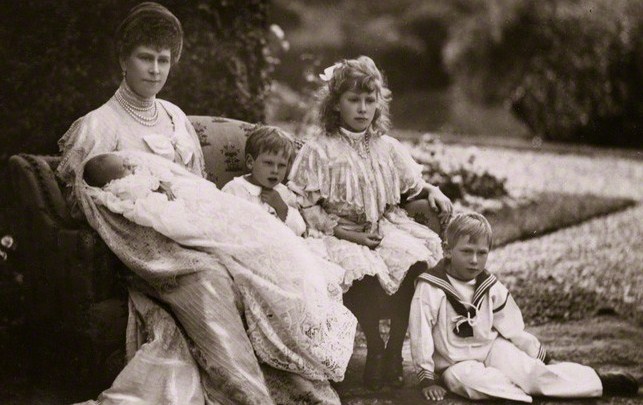
Prince John as a baby with his mother, Mary, his brothers, Henry and George, and his sister, Mary (photo by William Edwin Sorrell (born 1856) Public Domain, Wiki Commons)
The prince was born on July 12th 1905 at York Cottage, Sandringham, the fifth son and youngest child of the future George V and Queen Mary. At the time of his birth they were Prince and Princess of Wales. He was christened John Charles Francis on August 3rd 1905 at the Church of St. Mary Magdalene with a very regal set of godparents. Among his sponsors were King Carlos I of Portugal as well as the future King Constantine I of Greece (then Duke of Sparta) and the man who would become King Haakon VII of Norway (then still known as Prince Carl of Denmark).
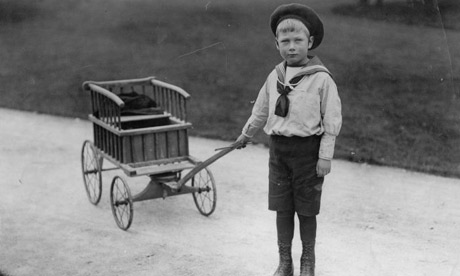
Prince John at York Cottage, (photo Public Domain, Wiki Commons)
His Royal Highness Prince John of Wales spent his early years at Sandringham with his four brothers – Edward, Albert, Henry and George – and his sister, Mary. He was a happy and healthy child, called Johnny by his family.
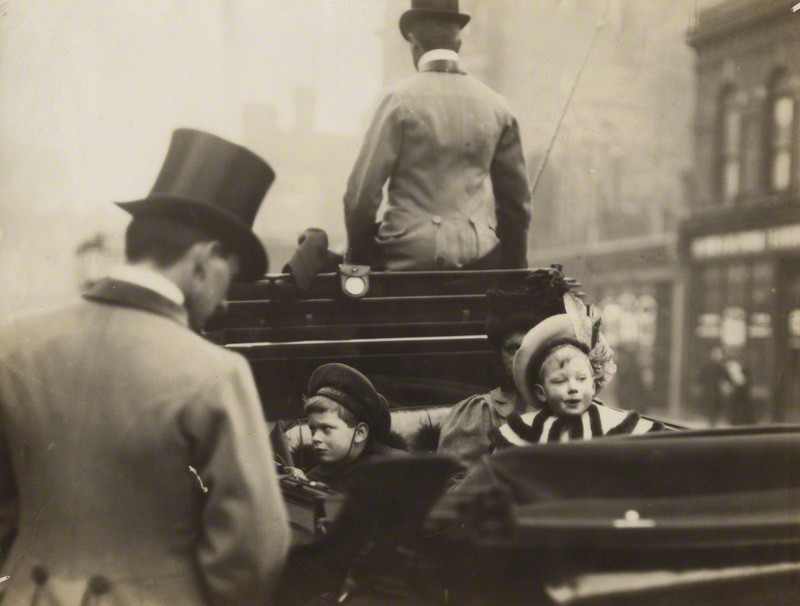
Prince John on a shopping trip with his older brother, Prince George (Public Domain, Wiki Commons)
Johnny was often seen out and about with his family as he grew up and appeared in family portraits – in this image he is in the front row with big brother, Bertie (later King George VI), resting a protective arm on one shoulder. But behind palace doors, those who cared for him noted that his behaviour was starting to differ from that of his siblings. He was bolder than them and his father once told Theodore Roosevelt that all his children were obedient ”except John”. But his behaviour was often indulged by his parents who had been notoriously strict with their other children.
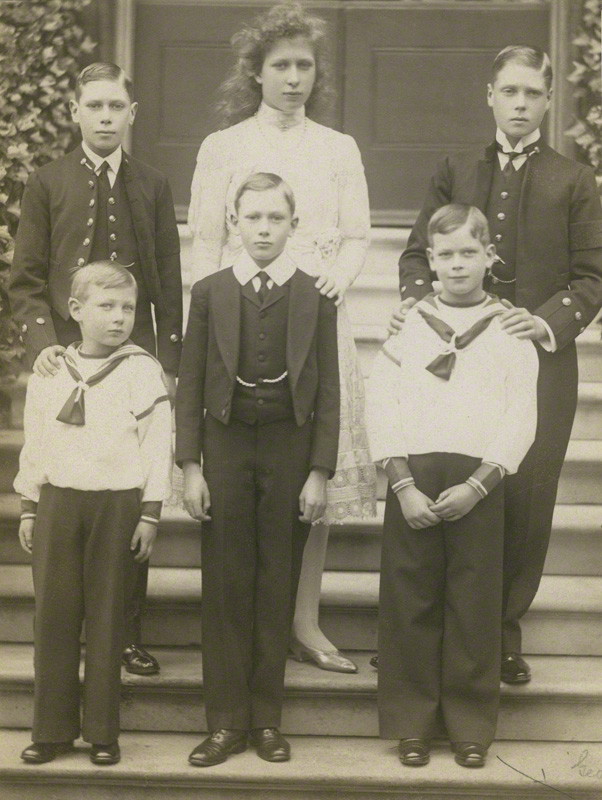
Prince John with his brothers and sister in 1910, the year their father became King George V (photo by Arthur James Hope Downey, for W. & D. Downey, Public Domain, Wiki Commons)
Some historians have pointed to this being an early indication that George and Mary realised their son had some form of learning difficulties. His physical health began to give cause for concern as he grew and John suffered his first epileptic fit just after turning four. However, he remained an integral part of the Royal Family as his father ascended the throne as King George V in 1910, appearing in photos and portraits as a new era got under way. However, the young prince didn’t attend his parents’ coronation in 1911.
In 1913, it was confirmed that John wouldn’t be following his siblings to school. Instead, he was educated at home where his care increasingly fell to his beloved nanny, Charlotte Bill (known as Lala), who had been with him from his earliest days. His family and his doctors hoped his seizures would lessen but as the years passed, it became clear they were only getting more frequent. There was little medical treatment available for epilepsy at the time and the condition was poorly understood leading to stigma. However, King George V had always taken a deep interest in support for those with epilepsy and was already President of the National Society for the Employment of Epileptics by the time his son began to have fits.
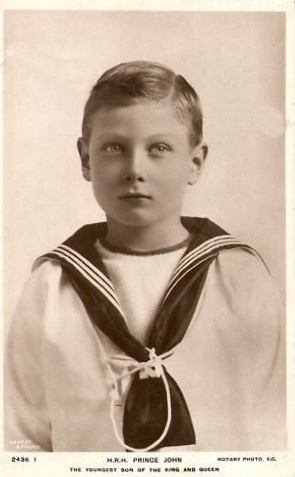
By Unknown author, Public Domain, Wiki Commons
John was eight when the Great War broke out and as 1914 came to an end, his parents were spending increasing amounts of time away. However, there is every indication that George and Mary remained loving parents, involved in the decisions that affected their younger son who remained at Sandringham. As it became increasingly clear that John’s seizures were getting worse, he moved to Wood Farm at Sandringham where he lived permanently with Lala Bill.
Queen Mary asked local children to come to Wood Farm to play with her youngest son and Johnny made friends with several of them. They would go cycling together and play in the woods around the farm. Johnny’s paternal grandmother, Queen Alexandra, had part of the gardens at Sandringham turned into a special plot for the young prince to tend. Meanwhile, his bond with Lala Bill became ever stronger. After her death, in 1964, a handwritten note from the prince was found in her belongings. It read, simply, ”Nanny, I love you, Johnny”.
John spent the Christmas of 1918 with his family at Sandringham where his health gave little extra cause for concern. But on January 18th 1919, he suffered a seizure while asleep and died. Lala Bill was with him and telephoned Queen Mary to tell her that her youngest child was dead. Mary and George returned immediately to Wood Farm and a few days later, led a sombre funeral procession to St. Mary Magdalene Church where John was buried on January 21st 1919. Such was his popularity that there wasn’t room for all those who wanted to pay their last respects inside the church.
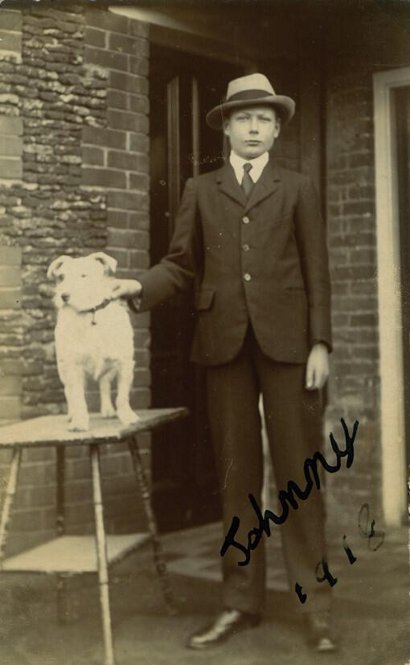
One of the last images of Prince John (By Frederick William Ralph, Public Domain, Wiki Commons)
After his death, Mary wrote that ”his malady was becoming much worse…he has thus been spared much suffering” but her heartbreak was clear in other words where she confided ”our poor little Johnny has passed away suddenly”. Queen Alexandra offered support – she had lost her own son, Alexander John, soon after birth in 1871 and had seen him laid to rest, too, at St. Mary Magdalene church. She wrote to Mary, telling her that their ”two darling Johnnies lie side by side”. Lala Bill never forgot the young prince – even in old age, she kept a photo of John in pride of place in her front room.
After his death, John was rarely talked about by the Royal Family and decades later, his seclusion at Wood Farm was taken by some as evidence that the Windsors tried to hide him away to avoid embarrassment. He was left out of a later family tree while his image wasn’t included in a programme produced to mark George and Mary’s Silver Jubilee in 1935. But while letters emerged in which John’s eldest brother, the ill fated Edward VIII, described him as ”an animal”, other correspondence shows the horror his own relatives felt at those cruel words. Those who knew Mary and George spoke of their devotion to their youngest son whose loss left a huge hole in their family. Johnny was clearly a hugely important part of their world, a handsome and much missed young man, very far from his modern day description as a ”lost prince”.

